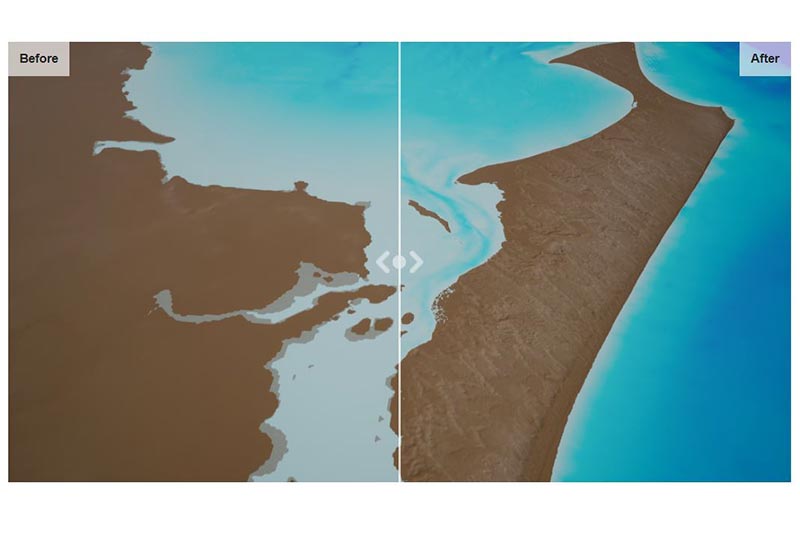
As part of a four-year project by Geoscience Australia, James Cook University and the Australian Hydrographic Service, high-resolution
sea floor maps have been released
showing 1.5 million square kilometres of Australia's Great Barrier Reef in unprecedented
detail. This represents the highest resolution depth model of the Great Barrier
Reef to date, with data that is around eight times higher resolution than what
was available previously, improving from 250 m resolution to 30 m resolution. .
This project collated millions of dollars’ worth of existing
datasets from government sources including the Australian Hydrographic Service,
along with new data.
The series of datasets produced through this project will
provide a detailed view of the marine geography of Australia's northern
coastline, providing greater legal certainty on the location and extent of the
country's maritime boundaries.
The datasets will also support safety of life at sea, the
enforcement of law, and government operations.
The data can be used for policy, planning and scientific
work. For example, this data is an important input for oceanographic modelling,
which can be used to enhance knowledge of climate change impacts, marine
biodiversity, and species distribution. It will also improve modelling of tides
and ocean currents, and enable better prediction of storm surges on the coast.
There are currently around 3000 identified coral reefs in
the Great Barrier Reef Marine Park but the researchers hope this data will help
to discover even more, which will support management and conservation of the
marine park.
This Great
Barrier Reef bathymetry data has been made to available to the public
and this data is the first in a series of '30-metre' datasets that will be
released as part of this project. There are plans to make similar
high-resolution data available for large areas of Australia's Northern
coastline in the next year. (Bathymetry
is the study and mapping of the sea floor.)
"We're using cutting-edge scientific techniques to
combine historical and newly-acquired bathymetry data of the entire northern
coastline of Australia. Along with the quality of the new data we've acquired,
we've also been able to access undersea mapping data collected over the past
few decades by government and university research programs," said Dr Robin Beaman, JCU's research leader who initiated the project.
Chief of Geoscience Australia's Environmental Geoscience
Division, Dr Stuart Minchin, said he was pleased that his team was able to get
on board and support this important project with such wide-ranging potential.
"Having greater knowledge of the shape of the reef will
be a critical tool for the government agencies responsible for its protection.
This gives those organisations a far more detailed view of the reef with which
they can identify new reef structures and coral formations,” he said.
Dr Minchin commented on the collaboration, “We've been able
to support the team at JCU, who are specialists in this kind of marine research
by contributing our resources and expertise to the project. We've also worked
with the Australian Hydrographic Service to bring their vast stores of marine
mapping data into the project as well. Collaborating with these organisations
over the past four years has seen us map the entire northern Australian
coastline, including the Great Barrier Reef. We saw the value in JCU's work and
the potential of these high-quality datasets to provide greater certainty on
Australia's maritime boundaries for government and other maritime operators.”
















